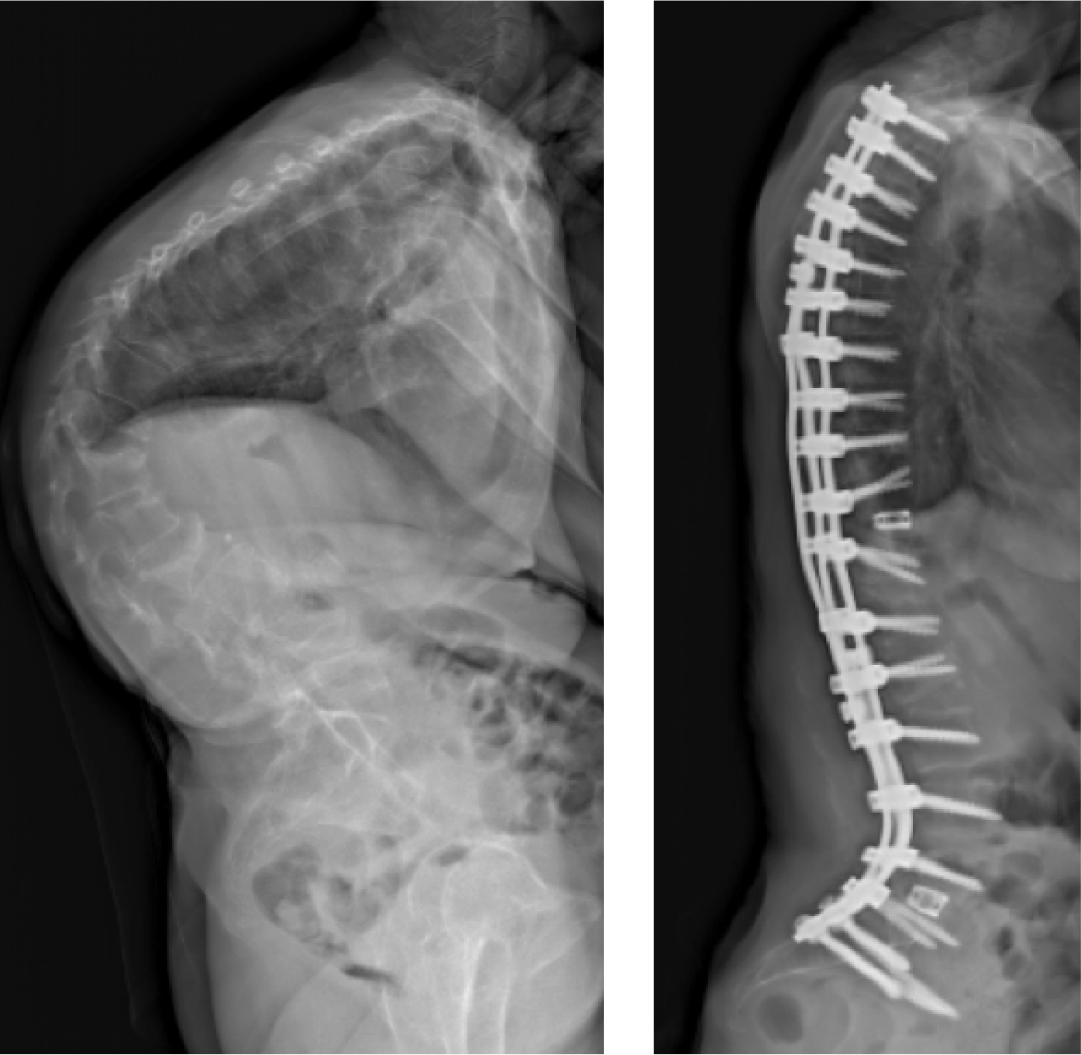Kyphosis is a forward curvature of the spine that can be seen when looking at the patient from the side (in profile). A certain amount of kyphosis is normal in the thoracic spine. When excessive, kyphosis can cause cosmetic and functional difficulties.
Treating Kyphosis. In a growing child, treatment of Scheuermann’s kyphosis with a spine brace may be effective. However, if the deformity continues to progress—reaching 70 degrees or greater—and the child has finished growing, surgical intervention is an option.
If kyphosis has become severe (greater than 80 – 90°) and causes frequent back pain, surgical treatment may be recommended. Surgery provides significant correction without the need for postoperative bracing. Pedicle screws are placed, 2 per vertebra, and connected with 2 rods. This process promotes gentle straightening of the spine.
The type of treatment depends on the cause and the severity of kyphosis. For the most part, nonoperative treatments are recommended before surgery is considered. Nonoperative treatments include pain medications, physical therapy, and certain braces. Surgery is considered if:
Surgery may be the best option for some kyphosis cases. For example, children born with structural problems that cause kyphosis often require corrective surgery. Likewise, surgery is often required for adolescent kyphosis in which the curve in the back exceeds 50-60 degrees or is painful.
When surgery is indicated—as is often the case in Scheuermann’s kyphosis—an orthopedic surgeon will restore physiologic alignment to the spine by performing one or more of the following procedures: removing abnormal discs, fusing the affected vertebrae together, and placing instrumentation in the spine.
“The goal of surgery is to alleviate pain, restore the spine to proper alignment, and improve neurologic function,” explains Dr. Rawlins. Surgical treatment for post-traumatic kyphosis is accomplished through spinal fusion and stabilization with instrumentation.
The most common surgical treatments for kyphosis include: implanting growing rods; implanting vertical expandable prosthetic titanium ribs (VEPTR); performing a spinal fusion. Determining which surgery is right for your child will depend on your child’s age and skeletal maturity, along with other medical considerations. Growing rods and VEPTR are two options available.

For more information, you can visit the following resources:
HSS Overview of Kyphosis,
Post-Traumatic Kyphosis Overview at HSS,
CHOP Kyphosis Conditions,
HSS Kyphosis Condition List,
Kyphosis in Pediatric Patients at HSS,
University of Virginia Kyphosis Conditions,
Columbia Neurosurgery Kyphosis Conditions,
UC Davis Spine Center Kyphosis Specialties.


